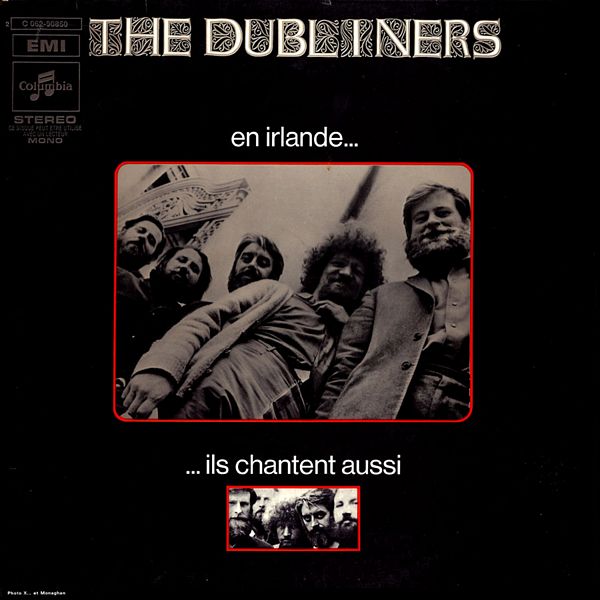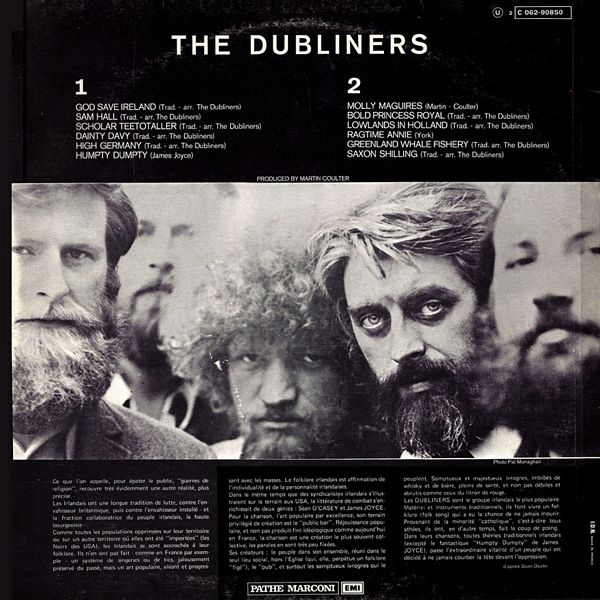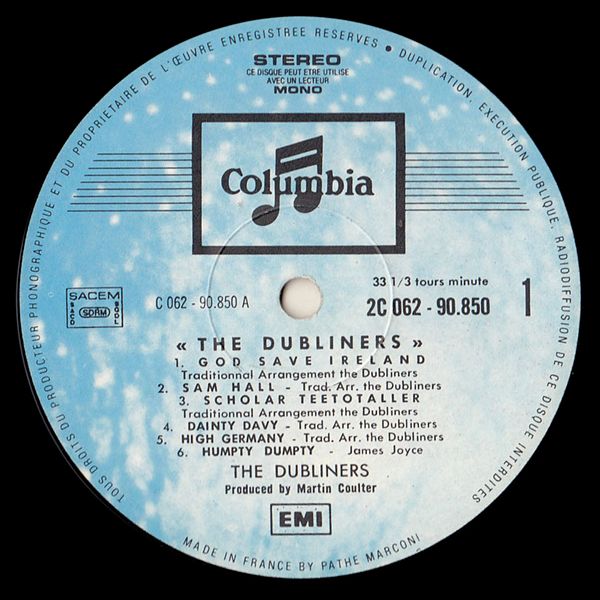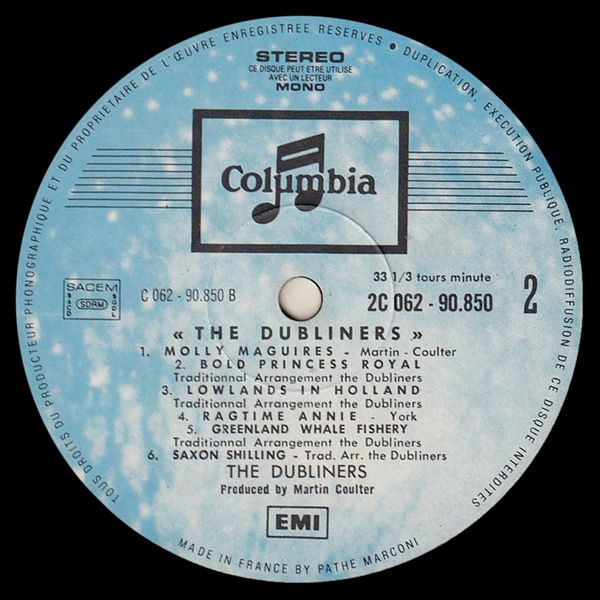

 |


 |
Sleeve Notes
Ce que l'on appelle, pour épater le public, "guerres de religion", recouvre très évidemment une autre réalité, plus précise.
Les Irlandais ont une longue tradition de lutte, contre l'envahisseur britannique, puis contre l'envahisseur installé — et la fraction collaboratrice du peuple irlandais, la haute bourgeoisie.
Comme toutes les populations opprimées sur leur territoire ou sur un autre territoire oà elles ont été "importées" (les Noirs des USA), les Irlandais se sont accrochés à leur folklore. Ils n'en ont pas fait — comme en France par exemple — un système de singeries ou de tics, jalousement préservé du passé, mais un art populaire, vivant et progressant avec les masses. Le folklore irlandais est affirmation de l'individualité et de la personnalité irlandaises.
Dans le même temps que des syndicalistes irlandais s'illustraient sur le terrain aux USA, la littérature de combat s'enrichissait de deux génies : Seán O'CASEY et James JOYCE. Pour la chanson, l'art populaire par excellence, son terrain privilégié de création est le "public bar". Réjouissance populaire, et non pas produit-fini idéologique comme aujourd'hui en France, la chanson est une création le plus souvent collective, les paroles en sont très peu fixées.
Ses créateurs : le peuple dans son ensemble, réuni dans le seul lieu social, hors l'Eglise (qui, elle, perpétue un folklore "figé"), le "pub", et surtout les somptueux ivrognes qui le peuplent. Somptueux et majestueux ivrognes, imbibés de whisky et de bière, pleins de santé, et non pas débiles et abrutis comme ceux du litron de rouge.
Les DUBLINERS sont le groupe irlandais le plus populaire. Matériel et instruments traditionnels, ils font vivre un folklore (folk song) qui a eu la chance de ne jamais mourir. Provenant de la minorité "catholique", c'est à-dire tous athées, ils ont, en d'autre temps, fait le coup de poing. Dans leurs chansons, toutes thèmes traditionnels irlandais (excepté le fantastique "Humpty Dumpty" de James JOYCE), passe l'extraordinaire vitalité d'un peuple qui est décidé à ne jamais courber la tête devant l'oppression.
d après Seán Devlin
Below via Google translates …
What is called, to impress the public, "wars of religion", very obviously covers another reality, more precise.
The Irish have a long tradition of struggle, against the British invader, then against the installed invader — and the collaborating fraction of the Irish people, the upper middle class.
Like all the oppressed populations on their territory or in another territory where they were "imported" (the blacks of the USA), the Irish clung to their folklore. They have not made — as in France for example — a system of antics or tics, jealously preserved from the past, but a popular art, alive and progressing with the masses. Irish folklore is an affirmation of Irish individuality and personality.
At the same time that Irish trade unionists made their mark in the US, the fighting literature was enriched by two geniuses: Seán O'CASEY and James JOYCE. For the song, the popular art par excellence, its privileged ground of creation is the "public bar". Popular rejoicing, and not an ideological finished product like today in France, the song is a collective creation most often, the lyrics are very fixed.
Its creators: the people as a whole, gathered in the only social place, outside the Church (which, it, perpetuates a "frozen" folklore), the "pub", and especially the sumptuous drunkards who populate it. Sumptuous and majestic drunkards, imbued with whiskey and beer, full of health, and not stupid and stupid like those of the litron of red.
The DUBLINERS are the most popular Irish band. Traditional equipment and instruments, they make live a folk song which was lucky never to die. Coming from the "catholic" minority, that is to say, all atheists, they have, at another time, made the punch. In their songs, all traditional Irish themes (except the fantastic "Humpty Dumpty" by James JOYCE), pass the extraordinary vitality of a people who are determined never to bow their heads in the face of oppression.
Seán Devlin